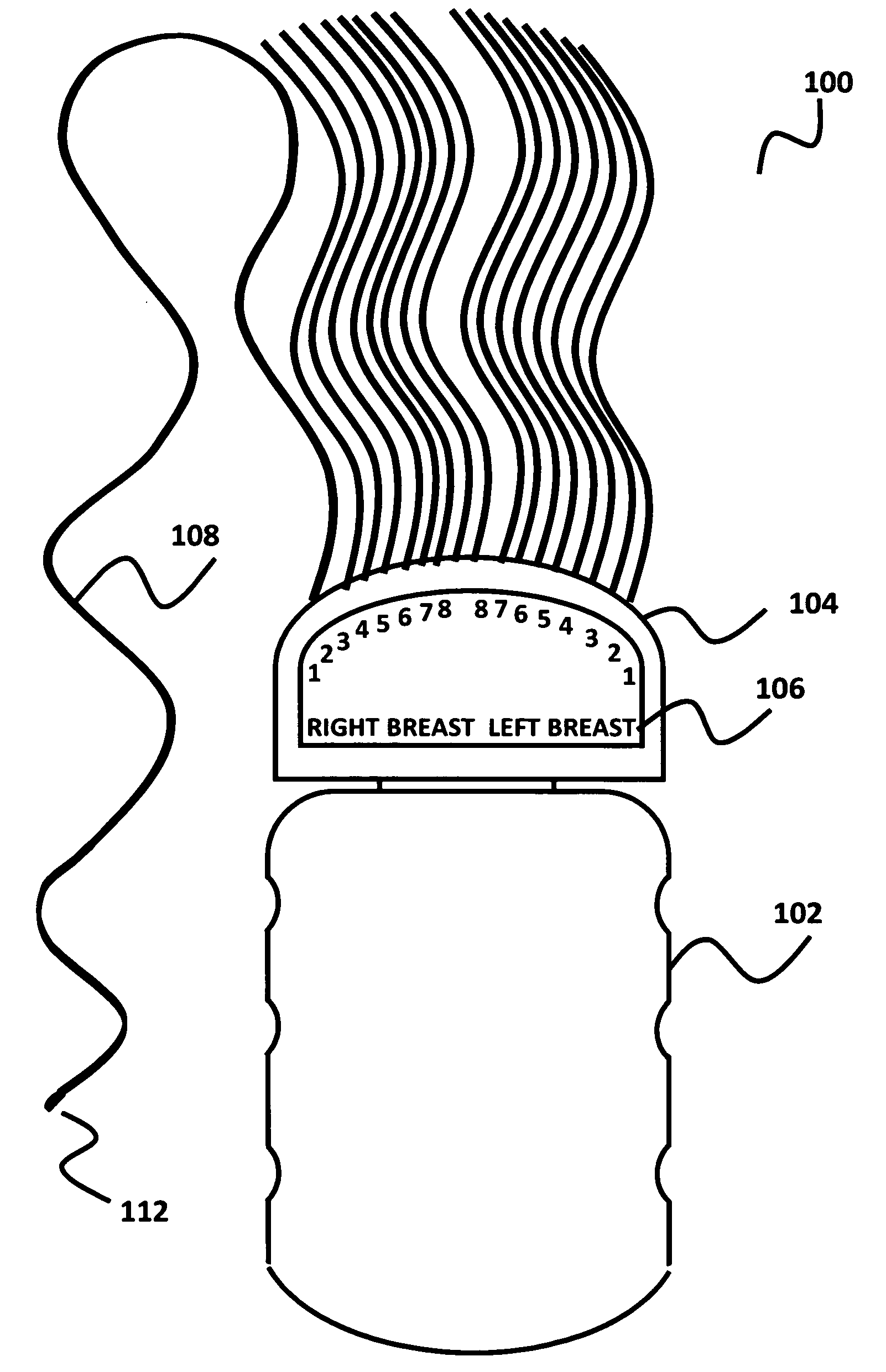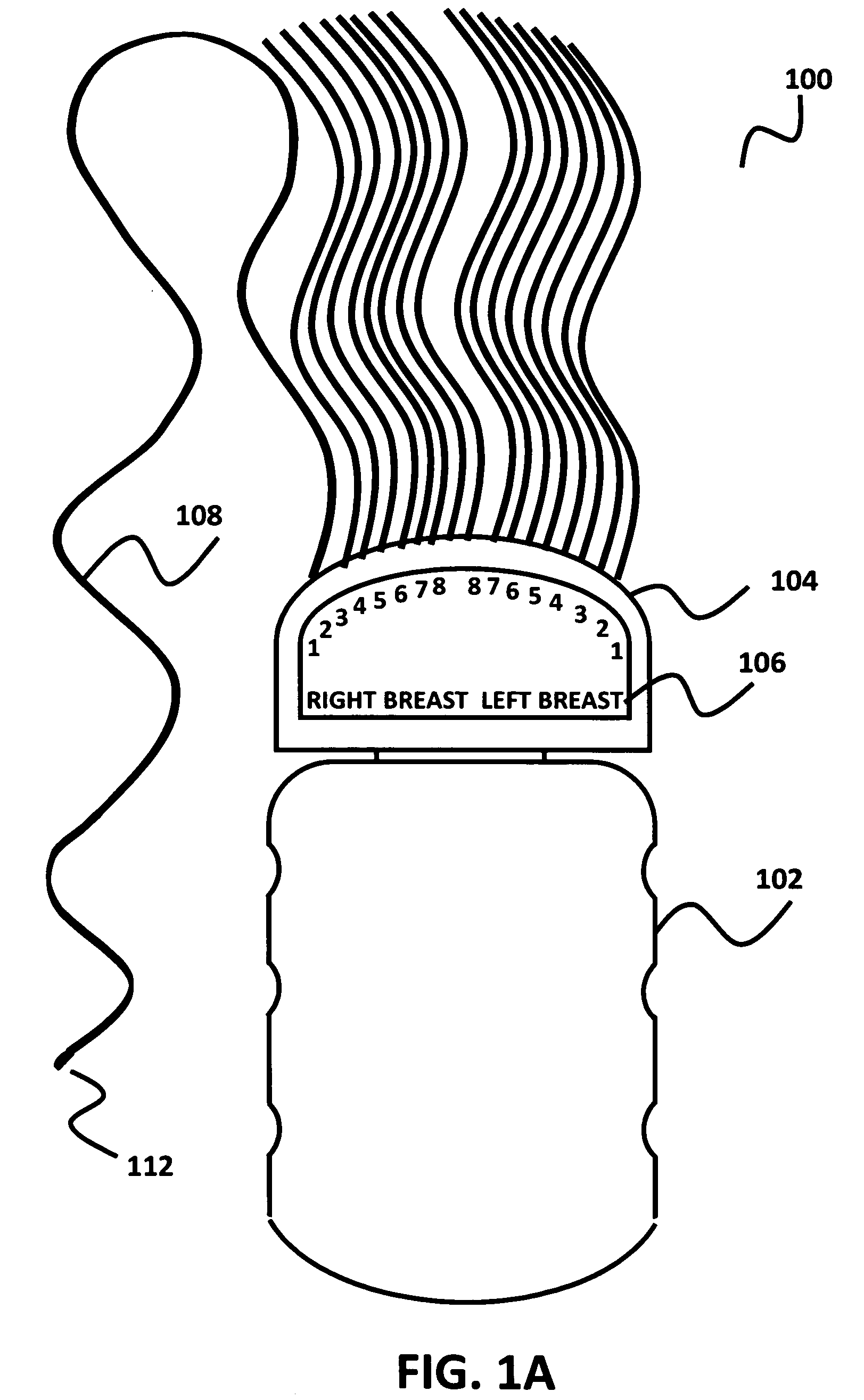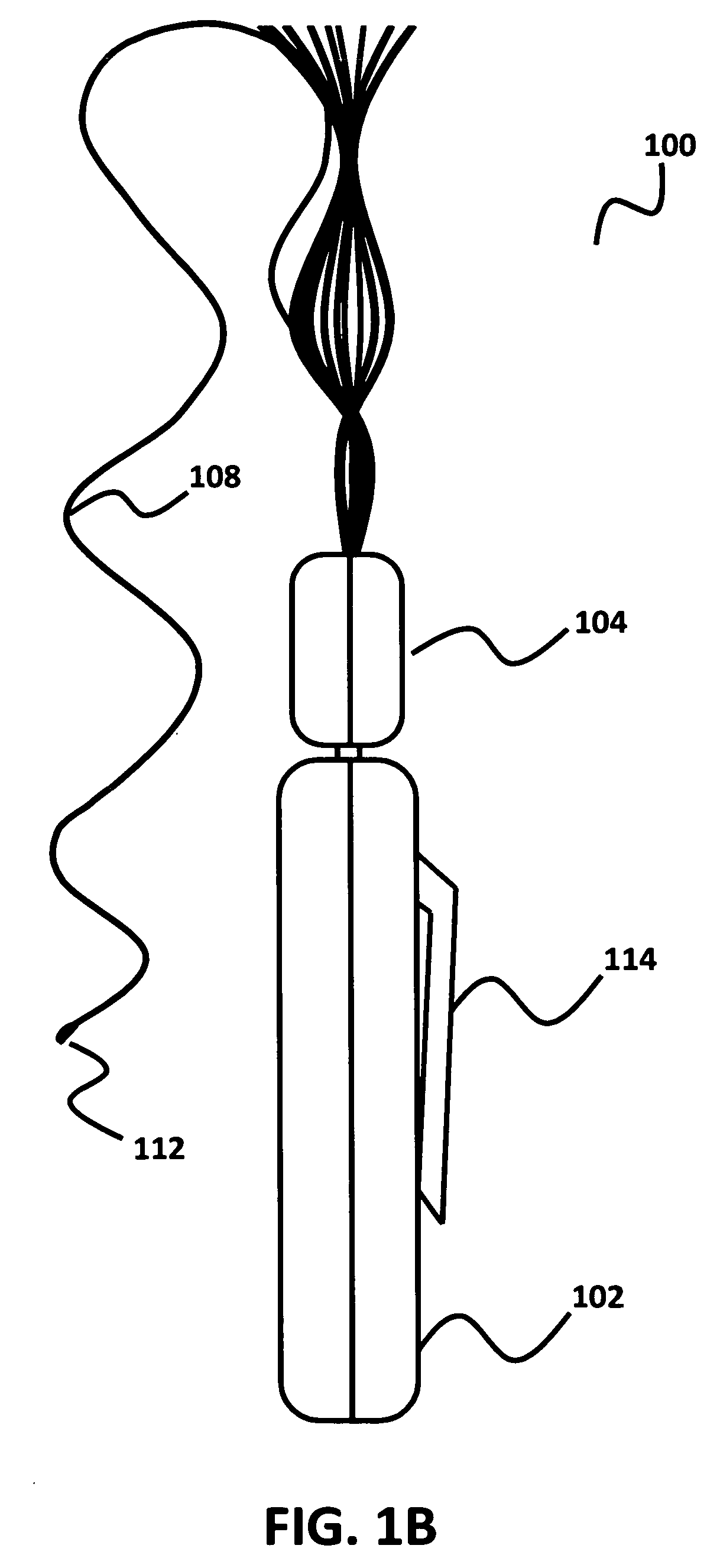Methods for collecting and analyzing thermal data based on breast surface temperature to determine suspect conditions
a thermal data and breast surface temperature technology, applied in the field of collecting and analyzing thermal data based on breast surface temperature to determine suspect conditions, can solve the problems of inability to find an accurate, limited value of mammography, and numerous unnecessary breast biopsies in the united states each year
- Summary
- Abstract
- Description
- Claims
- Application Information
AI Technical Summary
Problems solved by technology
Method used
Image
Examples
Embodiment Construction
[0026]The present invention is directed to a device and method for providing improved classification of breast tissue as either suspect tissue or non-suspect tissue. Suspect tissue can then be further analyzed using a variety of well-known diagnostic techniques. The device of the present invention includes a set of temperature sensors placed on the left and right breasts of a patient in accordance with a predefined pattern. The sensors collect temperature readings over a predetermined period of time. The collected temperature readings are then classified using one or more classifier systems.
[0027]The concept behind the present invention is that new blood vessels supplying a breast cancer do not respond to normal physiological control mechanisms (vasoconstriction and vasodilatation). Therefore, suspect tissue, such as cancers produce time-related pattern changes not seen in normal tissue. These pattern changes have been detected over a circadian (24 hour) rhythm, but can be detected ...
PUM
 Login to View More
Login to View More Abstract
Description
Claims
Application Information
 Login to View More
Login to View More - R&D
- Intellectual Property
- Life Sciences
- Materials
- Tech Scout
- Unparalleled Data Quality
- Higher Quality Content
- 60% Fewer Hallucinations
Browse by: Latest US Patents, China's latest patents, Technical Efficacy Thesaurus, Application Domain, Technology Topic, Popular Technical Reports.
© 2025 PatSnap. All rights reserved.Legal|Privacy policy|Modern Slavery Act Transparency Statement|Sitemap|About US| Contact US: help@patsnap.com



